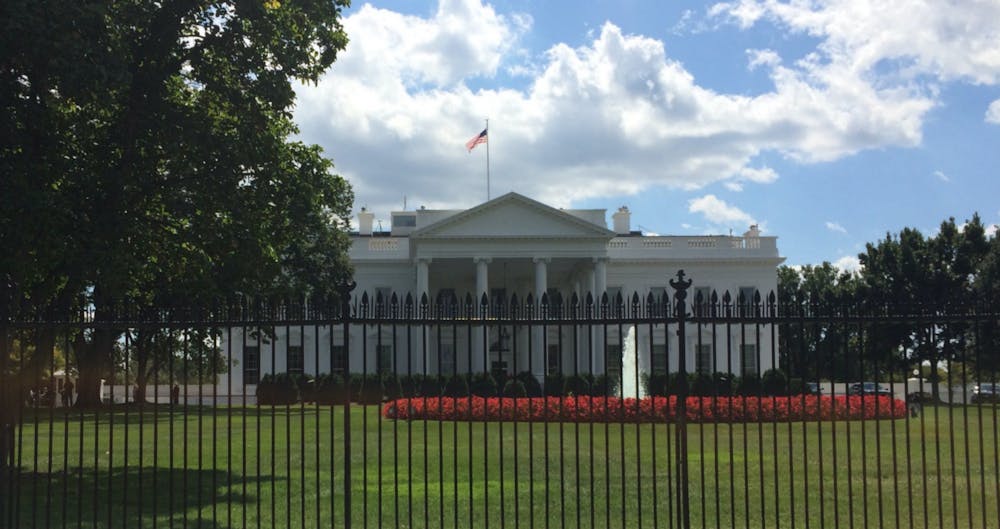American University students scrambled this summer to decide whether or not to return to D.C. in the fall. Following an outbreak in the White House, students that decided to sign a lease in the District feared contracting the coronavirus from government officials.
Infectious disease expert Dr. Anthony Fauci called the White House’s ceremony for the Supreme Court nomination of Amy Coney Barrett on Sept. 26 a “superspreader” event, after at least 34 staffers and contacts contracted COVID-19.
It was just five days after the ceremony that Hope Hicks, one of the president’s top aides, tested positive for the virus. A day after Hicks’ diagnosis, President Donald Trump announced on Twitter that he and First Lady Melania Trump also tested positive. Senators Mike Lee (R-Utah), Thom Tillis (R-N.C.) and former White House adviser Kellyanne Conway, who attended the Barrett ceremony, also announced they contracted the virus.
“This was a disaster waiting to happen from the beginning when the president was denying the severity and intensity of this disease,” School of Communication professor Leonard Steinhorn said. “The images of the Amy Coney Barrett event at the White House, with people hugging each other, talking close to each other [and] not wearing masks, are just symbolic of the cavalier attitude that the president has taken to this whole pandemic.”
According to a USA Today investigation, the individuals infected at the White House event came in contact with at least 6,000 people within a week of attending the event.
A week after the cluster of cases emerged, the White House began working with two epidemiologists from the Centers for Disease Control and Prevention to contact trace. Previous to this, tracing efforts had been run by the White House Medical Unit.
“I would assume that [the White House Medical Unit] are competent medical and allied health professionals,” said Jolynn Gardner, director of AU’s Public Health Program. “The one thing that does concern me is that they are a medical unit. They are not a unit devoted to disease investigation, that's what the CDC does.”
Not only did the White House fail to effectively contact trace, officials say the White House called off early efforts to use cutting-edge technology that can track the speed of the virus by looking at its genetic code.
AU senior Noelle Serino, who double majors in public health and justice and law, spoke on how functions like the White House “superspreader” event can mislead public health regulations.
“The danger is that there's so much misinformation out there when you have the president of the United States having events like this,” Serino said. “It's easy to get confused when there's so much conflicting information.”
But, identifying false information about COVID-19 may not be difficult for AU public health students, as many of their classes have become dominated by the subject.
Steinhorn, who teaches a class that gives journalism students the chance to cover a presidential election, spoke about the changing dynamic in his class caused by the pandemic.
“We certainly talk about Black Lives Matter, we talk about the health of our democracy, efforts to suppress the vote, campaign strategies, the debates,” Steinhorn said. “But, because COVID is this huge vortex that sort of pulls everything into it, that really is a major thread in everything that my class has to talk about.”
The topic likely won’t be out of classrooms anytime soon. According to Gardner, even without the White House “superspreader” event, cases are likely to rise in D.C. and across the country in the colder months.
“If we could get people to do the simple things of wearing a mask and practicing social distancing and washing their hands and just being extremely careful, we probably could flatten that curve a little better,” Gardner said.





